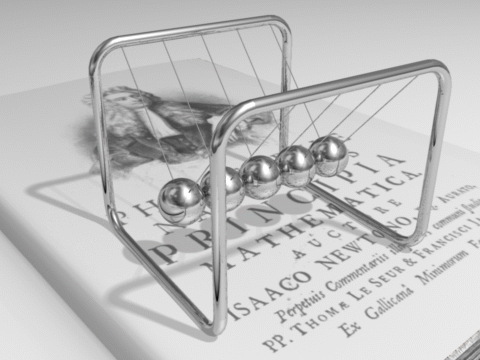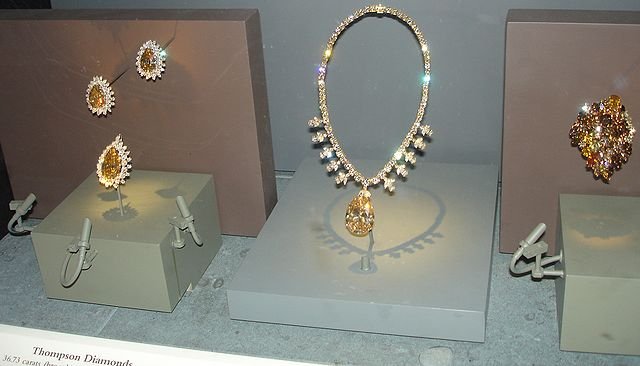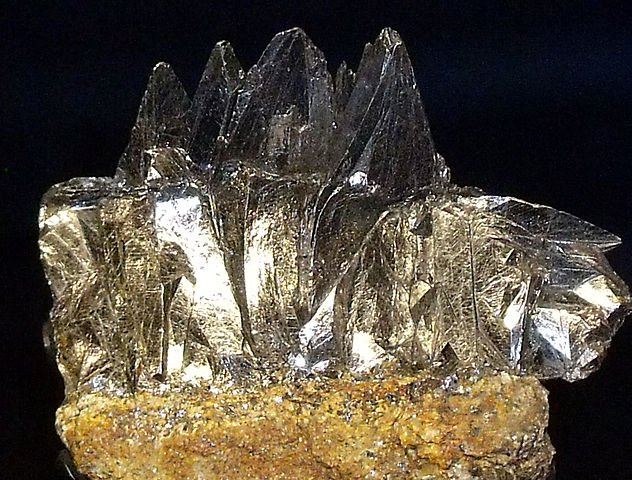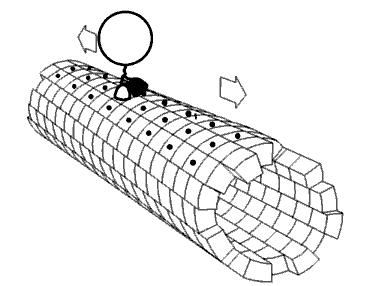STRUCTURE AND BONDING OF THE ELEMENTS #2
Hello, dear readers. I'm still on the structure and bonding of the elements; but today I will be discussing on the properties of metals such as its electrical conductivity, superconductor, giant molecules, allotropy of carbon and nanotechnology. Starting with the electrical conductivity of metals:
Electrical conductivity of metals
All metals are good electrical conductors because of the presence of delocalized electrons throughout the metal lattice. It is only the electrons in the outer shell that can be delocalized.

The inner electrons are still localized around the nucleus of the metal atom. This means that, for example, 1 mole of sodium has 1 mole of delocalized electrons, since it forms Na+, whereas 1 mole of magnesium has 2 moles of delocalized electrons, since it forms Mg2+.
When an electrical potential is placed across a strip of metal, electrons move from the negative to the positive area of the metal, and as a result a current flows. Normally, there is a resistance to the flow of electrons in a metal. This results in some of the electrical energy being lost as heat.
Superconductors
Superconductors are materials that conduct electricity with little or no resistance. So when a current flows through a superconductor there should be little or no heating effect. The superconducting materials presently available work only at low temperatures, but each year new materials are discovered that raise the operating temperatures of superconductors. However, we are still some time away from a superconductor that will work at room temperature.
Superconductors offer the promise of loss-free power transmission, super-fast electronic circuits, powerful electromagnets and ultra-sensitive magnetic detectors. The figure below shows a magnetic levitation ultra-high speed train now in commercial use in Japan and other countries. This uses a superconductor to make an extremely powerful electromagnet.

Other physical properties of metals
All the other typical physical properties of metals can be explained by reference to the model of bonding in which the positive ions are immersed in a sea of delocalized electrons.
- A metal is strong because when its structure is deformed by applied stress and the positive ions move, the delocalized electrons move as well, thus maintaining their attraction to the positive ions.
- Kinetic energy is transferred easily from one delocalized electron to another, which explains why metals are such good thermal conductors.
- The presence of delocalized electrons also explains why metals are shiny and have a lustre. These electrons are easily promoted to higher energy levels, from which they fall to lower levels, emitting the light that makes the metal shine.
- Metals have fairly high melting and boiling points because the attraction between the delocalized electrons and the positive ions is strong. The greater the number of delocalized electrons the stronger this attraction, so magnesium has a higher melting point than sodium.
GIANT MOLECULES
Some elements have extremely high melting points. This is because the particles – atoms – in the crystal lattice are strongly attracted to one another. In a giant molecule the atoms are held together by strong covalent bonds. The whole crystal of a giant molecule should be considered as one molecule. For such a structure to melt, each atom must be able to move freely. For this to happen, every covalent bond must be broken. Covalent bonds are very strong, so need a large amount of energy to break. This means the melting, and consequently the boiling point, is very high. Carbon and silicon, which have the highest melting points in their respective periods, exist as giant molecules. Elements that have a giant molecular structure are also said to have a macromolecular or giant covalent structure.
ALLOTROPY OF CARBON
Diamond and graphite are different crystalline forms of carbon that both have a giant molecular structure. These crystalline forms are called allotropes. An element is said to have allotropes (show allotropy) when it exists in the same state in more than one structural form. Oxygen, for example, can exist in two forms in the gaseous state: dioxygen (O2) and ozone (O3). The allotropes of an element have the same or similar chemical properties. But their physical properties are different, because each allotrope has its own crystal structure. In the case of diamond and graphite, the physical properties are markedly different. For example, graphite is a good conductor of electricity, but diamond is an extremely poor conductor. These differences in properties are associated with the different internal crystal structures.
Diamond
Diamond is the hardest substance known and is the least compressible. It is a better conductor of heat at room temperature than any other material, and when completely pure it is transparent. These extreme properties make diamond technologically very useful. Its hardness makes it useful as an industrial abrasive and as a cutting tool in industry and surgery, and because of its excellent heat conductivity it is used as a heat sink to cool electronic components rapidly. Certain impurities implanted in diamond can make it a semiconductor. These applications are a direct result of the internal structure of a diamond crystal, coupled with the fact that the carbon atoms in diamond are more closely packed than the atoms in any other material.

The atoms in a crystal of diamond are bonded into one giant molecule. Each carbon atom is covalently bonded to four other carbon atoms, and so each carbon atom has four nearest neighbours. That is, its coordination number is 4. When just four bonding pairs of electrons surround an atom, they are arranged tetrahedrally. This is the case with diamond. All outer electrons of the carbon atoms are involved in the formation of covalent bonds. There is no possibility of delocalized or mobile electrons. As a consequence, diamond cannot conduct electricity.
Graphite
The arrangement of carbon atoms in graphite are considerably different from that in diamond. In graphite, each carbon covalently bonded to three other carbon atoms. All the bond angles are 120 degrees which is what would be expected if only three bonding electron pairs surrounded the carbon atom.
However, a check on the number of electrons reveals that there is one electron per carbon atom left over. These electrons are delocalized and explain the electrical conductivity of graphite. Although graphite is composed of giant molecules, its atoms are arranged in layers that can slide past one another. Weak van der Waals (induced dipole-induced dipole) forces hold the layers together. The internal structure of graphite accounts for its:
- extremely high melting point, since many very strong covalent bonds have to be broken to allow the carbon atoms to move freely:
- electrical conductivity, since the delocalized electrons are free to move when subjected to a potential difference:
- brittleness, since it is easy to split one layer from another as only the weak van der Waals forces need to be broken.
Graphite is used to make electrodes (particularly for high-temperature work since they will not melt), electrical contacts and brushes for electrical motors. It is also used in lubricants and in pencil leads. Composite materials that contain graphite are used to make racquets, fishing rods and golf clubs.

Stability of graphite and diamond
Given its structure, it is surprising that graphite is the most stable form of carbon. The logical conclusion of this would be that diamond should change into graphite at room temperature. Fortunately, this does not happen, because to change the structure of the diamond lattice, all of its covalent bonds would have to be broken. This would need an enormous amount of energy, which is not available at room temperature. Chemists refer to this property as having a huge activation energy.
In the same way, it is difficult to convert graphite into diamond, because it has a very large activation energy. To convert graphite into diamond requires an extremely high temperature and pressure. In fact, a pressure of approximately 60 000 atmospheres and a temperature of 1500 °C are needed before diamond becomes more stable than graphite. The conversion of graphite to diamond is endothermic.
Natural diamonds are produced by this combined action of heat and pressure deep under the Earth’s surface. Artificially, graphite and carbon-containing compounds, such as coal, or even peanut butter, are processed at about 100 000 atmospheres and 2000°C to make industrial diamonds. Despite the commercial importance of industrial diamonds, only about 100 tonnes per year are needed world-wide. Most of these industrial diamonds are used in abrasive coatings and in cutting tools.
The quality of industrial diamonds is steadily improving and soon they may compete with natural diamonds to be used in jewelry.
Fullerenes
Since the mid-1980s, a new class of allotropes of carbon has been identified. They were given the name ‘fullerenes’ as I have explained in my previous post [here]. The most widely studied fullerene is C60 which is a self-contained molecule that exists in both crystalline and amorphous forms. An interesting aspect of the C60 molecule, apart from its sheer size, is its shape, which resembles a football with hexagonal and pentagonal panels. So, originally called buckminsterfullerene, C60 is now almost always known as ‘buckyball’. Since the discovery of C60, many other arrangements have been identified: for example, C70, C72, and C84.
SILICON
Silicon is in Group 4 of the Periodic Table. From this we can reasonably predict that the silicon atom forms four covalent bonds. Silicon forms a giant molecular structure in which every silicon atom is surrounded by four covalent bonds, similar to the structure of diamond.
Since silicon and diamond have the same internal structures, their physical properties should be similar – and they are. Silicon has a very high melting point, it is very hard and in its pure state it is a very poor conductor of electricity.
Molecular nanotechnology
The three dimensional structural control of materials, processes and devices at the atomic scale is called nanotechnology. It will lead to a fundamental breakthrough in the way materials, devices and systems are understood, designed and manufactured.

Following the discovery of buckminsterfullerene in 1986 there has been rapid development in a range of similar molecules called nanotubes. Carbon nanotubes are a new form of carbon, first identified in 1991 by Sumio lijima, a Japanese scientist. The honeycomb-shaped walls of nanotubes may consist of either muiltiple layers of carbon atoms or just a single layer.
Scientists consider carbon nanotubes as one of the building blocks of the 21st-century nanotechnological revolution. This is because they possess many remarkable properties. For example, it is estimated that they are 100 times stronger than steel at only one-sixth of the mass, they conduct electricity better than copper and transmit heat better than diamond.
Possible applications for nanotubes include flat-screen LCD screens, hydrogen storage, drug delivery, catalysts, memory-storage devices and many more yet to be discovered.
CONCLUSION
What this post is all about is basically that all metals are good conductors of electricity because of the presence of delocalized electrons in their lattice. Also, in a metal, there is a resistance to the flow of electrons in a metal which results in heat loss. A metal is also strong because when its appearance is altered by stress and the positive ions need to move, the delocalised electrons will move as well, thereby maintaining their attraction to the positive ions.
Secondly, superconductors are those materials that have the ability to allow electricity to pass through with almost no resistance. When a current is passed through a superconductor, it is expected that there should be no waste of electricity due to heat. All this can all be achieved when the superconductor is only used at low temperatures.
Some elements can be regarded as giant molecules simply because they have extremely high melting points. This is because the particles – atoms – in the crystal lattice are strongly attracted to one another. Diamond and graphite are different crystalline forms of carbon that both have a giant molecular structure. These crystalline forms are known as allotropes.
Diamond is the hardest known substance and is also the least compressible. It is a better conductor of heat at room temperature than any other material while the arrangement of carbon atoms in graphite are considerably different from that in diamond.
Finally, the 3D structural control of materials, processes and devices at the atomic scale is called nanotechnology. Nanotechnology found so many uses in the carbon nanotubes, flat-screen LCD screens, hydrogen storage, drug delivery, optical drives etc.
Thanks for coming
REFERENCES
https://www.tibtech.com/conductivite.php?lang=en_US
https://www.nature.com/articles/122882d0
https://science.jrank.org/pages/2322/Electrical-Conductivity-Metals.html
https://www.thoughtco.com/electrical-conductivity-in-metals-2340117
http://ffden-2.phys.uaf.edu/113.web.stuff/travis/what_is.html
https://en.wikipedia.org/wiki/Superconductivity
https://www.thoughtco.com/superconductor-2699012
https://www.thoughtco.com/metals-versus-nonmetals-608809
https://www.worldscientific.com/worldscibooks/10.1142/7199
https://www.sciencedirect.com/topics/engineering/giant-molecule
https://www.toppr.com/ask/question/what-is-giant-molecules/
https://byjus.com/jee/allotropes-of-carbon/
https://en.wikipedia.org/wiki/Allotropes_of_carbon
https://courses.lumenlearning.com/boundless-chemistry/chapter/carbon/
https://www.britannica.com/topic/diamond-gemstone
https://www.gia.edu/diamond
https://en.wikipedia.org/wiki/Diamond
https://www.britannica.com/science/graphite-carbon
https://en.wikipedia.org/wiki/Graphite
https://geology.com/minerals/graphite.shtml
https://www.quora.com/Why-is-graphite-more-stable-than-diamond
https://pubs.rsc.org/en/content/articlehtml/2019/cp/c8cp07592a
https://chemistry.stackexchange.com/questions/27649/is-graphite-more-stable-than-diamond
https://www.britannica.com/science/fullerene
https://en.wikipedia.org/wiki/Fullerene
https://www.britannica.com/science/silicon
https://en.wikipedia.org/wiki/Silicon
https://www.scitechnol.com/nanomaterials/molecular-nanotechnology.php
https://en.wikipedia.org/wiki/Molecular_nanotechnology
http://www.circuitstoday.com/molecular-nanotechnology-mnt
Thanks for your contribution to the STEMsocial community. Feel free to join us on discord to get to know the rest of us!
Please consider supporting our funding proposal, approving our witness (@stem.witness) or delegating to the @steemstem account (for some ROI).
Please consider using the STEMsocial app app and including @steemstem as a beneficiary to get a stronger support.